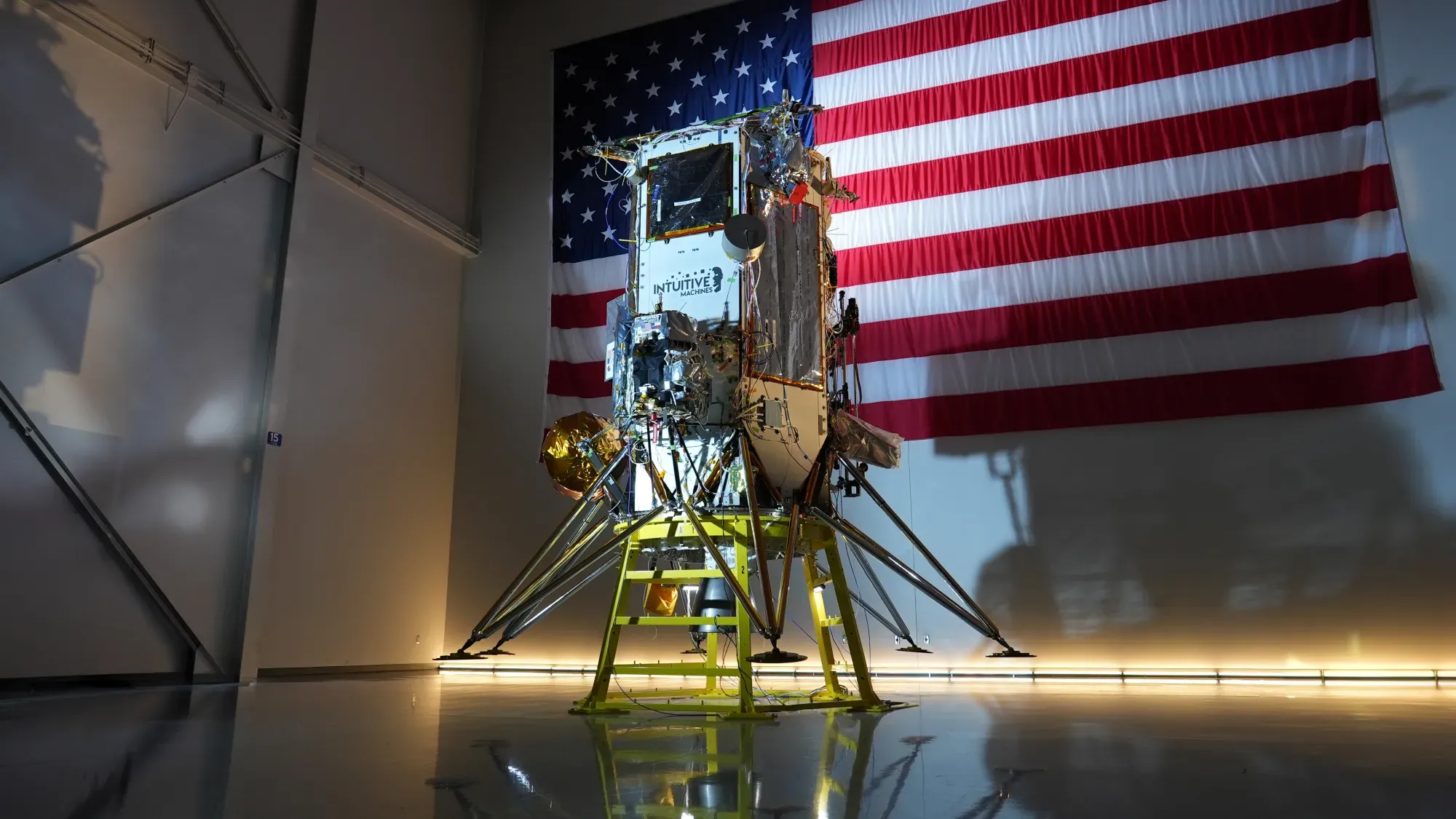
Intuitive Machines Sets Sights on Second Lunar Landing
Mission Details
Intuitive Machines, a Houston-based space exploration company, is poised to launch its second lunar lander, dubbed "Athena," this week. Financed by NASA, the mission aims to deliver scientific instruments to the lunar surface, specifically targeting areas suspected of harboring water beneath their surfaces.
Athena is poised to follow in the footsteps of Intuitive Machines’ previous successful lunar landing with "Odysseus" a year ago, marking a historic achievement as the first commercially-developed lunar lander to touch down on the moon. This mission also signified the United States’ return to the moon after over five decades since the Apollo era concluded.
Mission Objectives
The six-legged Athena lander, carried by a SpaceX Falcon 9 rocket from NASA’s Kennedy Space Center in Florida, will carry various scientific instruments designed to pave the way for human astronauts’ return to the lunar surface as early as 2027.
- Drill and Mass Spectrometer: The lander’s drill will probe beneath the lunar soil to detect and measure the presence of gases, providing insights into the lunar subsurface environment.
- Nokia LTE 4G Communications System: This system will test the feasibility of establishing a reliable communication network on the moon for future human missions.
- Propulsive Drone: Athena will deploy a drone capable of hopping across the lunar surface, demonstrating the potential for autonomous exploration and sample collection.
- Laser Retroreflector Array: This device will serve as a permanent reference point on the lunar surface, allowing for precise measurements from orbiting or incoming spacecraft.
Launch Window and Landing Site
The four-day launch window opens on February 26th. Athena will attempt to land on March 6th near the lunar south pole, specifically close to a plateau called Mons Mouton. This region is believed to contain abundant water ice and other volatile materials that could prove crucial for future lunar settlements.
NASA’s Involvement and Lunar Ambitions
NASA is the primary customer for this mission and is utilizing its Commercial Lunar Payload Services (CLPS) program to secure lower-cost lunar deliveries. The agency’s Artemis campaign envisions the moon as a vital stepping stone for human expeditions to Mars.
NASA’s Lunar Trailblazer spacecraft, launching alongside Athena on the same SpaceX rocket, will embark on a separate journey to map the distribution of water on the moon.
Historical Significance and Future Implications
Athena’s upcoming lunar landing holds historical significance, following the successful mission of the company’s first lunar lander, Odysseus, in 2024. That landing marked the first time a commercial entity successfully landed on the moon.
The mission is also part of a growing trend of uncrewed lunar missions, laying the groundwork for future human expeditions and the potential establishment of a permanent lunar settlement. The south pole, specifically, is believed to hold significant quantities of water ice that could sustain future human endeavors on the moon.
Other Lunar Missions
Athena’s mission will closely follow another lunar landing attempt by Firefly Aerospace’s "Blue Ghost" lander, which launched on January 15th. Blue Ghost is slated to land on March 2nd, carrying a separate set of scientific instruments for testing on the lunar surface.
The Race to Mars
While NASA’s Artemis program is focused on returning humans to the moon, President Donald Trump and SpaceX founder Elon Musk have expressed a preference for prioritizing Mars exploration. Musk, in particular, has outlined ambitious plans to send humans to Mars as early as 2028 using his company’s Starship vehicle.
Despite these ambitions, it is important to note that NASA’s Artemis program remains the most comprehensive and well-funded effort to return humans to the moon and prepare for future Mars missions.
